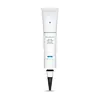What's inside
What's inside
 Key Ingredients
Key Ingredients

 Benefits
Benefits

 Concerns
Concerns

 Ingredients Side-by-side
Ingredients Side-by-side

Water
Skin ConditioningPropanediol
SolventDimethicone
EmollientCetearyl Ethylhexanoate
EmollientAlcohol Denat.
AntimicrobialDipropylene Glycol
HumectantAmmonium Polyacryloyldimethyl Taurate
Emulsion StabilisingAllyl Methacrylates Crosspolymer
Emulsion StabilisingAcrylamide/Sodium Acryloyldimethyltaurate Copolymer
Emulsion StabilisingHydrogenated Lecithin
EmulsifyingIsohexadecane
EmollientRetinol
Skin ConditioningPhenoxyethanol
PreservativeCaprylyl Glycol
EmollientPolysorbate 20
EmulsifyingIsopropyl Myristate
EmollientSodium Citrate
BufferingBoswellia Serrata Gum
MaskingPolysorbate 80
EmulsifyingDimethiconol
EmollientTrisodium Ethylenediamine Disuccinate
Bisabolol
MaskingBHT
AntioxidantSorbitan Oleate
EmulsifyingCitric Acid
BufferingPropyl Gallate
AntioxidantWater, Propanediol, Dimethicone, Cetearyl Ethylhexanoate, Alcohol Denat., Dipropylene Glycol, Ammonium Polyacryloyldimethyl Taurate, Allyl Methacrylates Crosspolymer, Acrylamide/Sodium Acryloyldimethyltaurate Copolymer, Hydrogenated Lecithin, Isohexadecane, Retinol, Phenoxyethanol, Caprylyl Glycol, Polysorbate 20, Isopropyl Myristate, Sodium Citrate, Boswellia Serrata Gum, Polysorbate 80, Dimethiconol, Trisodium Ethylenediamine Disuccinate, Bisabolol, BHT, Sorbitan Oleate, Citric Acid, Propyl Gallate
Water
Skin ConditioningSqualane
EmollientAllyl Methacrylates Crosspolymer
Emulsion StabilisingPolysorbate 20
EmulsifyingRetinol
Skin ConditioningBHT
AntioxidantGlyceryl Stearate
EmollientPEG-100 Stearate
Glycerin
HumectantButyrospermum Parkii Butter
Skin ConditioningDimethicone
EmollientBehenyl Alcohol
EmollientCetyl Palmitate
EmollientCaprylic/Capric Triglyceride
MaskingTitanium Dioxide
Cosmetic ColorantTriethoxycaprylylsilane
Acrylates/Acrylamide Copolymer
MoisturisingParaffinum Liquidum
EmollientPolysorbate 85
EmulsifyingMagnesium Aluminum Silicate
AbsorbentArgania Spinosa Kernel Oil
EmollientDi-C12-15 Alkyl Fumarate
EmollientCyclopentasiloxane
EmollientDimethiconol
EmollientPhenoxyethanol
PreservativeMethylparaben
PreservativeEthylparaben
PreservativePropylparaben
PreservativeButylparaben
MaskingStearic Acid
CleansingTriethanolamine
BufferingTocopheryl Acetate
AntioxidantXanthan Gum
EmulsifyingTetrasodium EDTA
Ascorbyl Palmitate
AntioxidantWater, Squalane, Allyl Methacrylates Crosspolymer, Polysorbate 20, Retinol, BHT, Glyceryl Stearate, PEG-100 Stearate, Glycerin, Butyrospermum Parkii Butter, Dimethicone, Behenyl Alcohol, Cetyl Palmitate, Caprylic/Capric Triglyceride, Titanium Dioxide, Triethoxycaprylylsilane, Acrylates/Acrylamide Copolymer, Paraffinum Liquidum, Polysorbate 85, Magnesium Aluminum Silicate, Argania Spinosa Kernel Oil, Di-C12-15 Alkyl Fumarate, Cyclopentasiloxane, Dimethiconol, Phenoxyethanol, Methylparaben, Ethylparaben, Propylparaben, Butylparaben, Stearic Acid, Triethanolamine, Tocopheryl Acetate, Xanthan Gum, Tetrasodium EDTA, Ascorbyl Palmitate
Ingredients Explained
These ingredients are found in both products.
Ingredients higher up in an ingredient list are typically present in a larger amount.
We don't have a description for Allyl Methacrylates Crosspolymer yet.
BHT is a synthetic antioxidant and preservative.
As an antioxidant, it helps your body fight off free-radicals. Free-radicals are molecules that may damage your skin cells.
As a preservative, it is used to stabilize products and prevent them from degrading. Specifically, BHT prevents degradation from oxidation.
The concerns related to BHT come from oral studies; this ingredient is currently allowed for use by both the FDA and EU.
However, it was recently restricted for use in the UK as of April 2024.
Learn more about BHTDimethicone is a type of synthetic silicone created from natural materials such as quartz.
What it does:
Dimethicone comes in different viscosities:
Depending on the viscosity, dimethicone has different properties.
Ingredients lists don't always show which type is used, so we recommend reaching out to the brand if you have questions about the viscosity.
This ingredient is unlikely to cause irritation because it does not get absorbed into skin. However, people with silicone allergies should be careful about using this ingredient.
Note: Dimethicone may contribute to pilling. This is because it is not oil or water soluble, so pilling may occur when layered with products. When mixed with heavy oils in a formula, the outcome is also quite greasy.
Learn more about DimethiconeDimethiconol is a silicone that resembles the popular dimethicone. Like other silicones, it is an emollient. Emollients create a thin film on skin to prevent moisture from escaping.
This ingredient helps to create a silky texture and improve spreadability. Due to its high molecular weight and thickness, it is often combined with cyclopentasiloxane.
Phenoxyethanol is a preservative that has germicide, antimicrobial, and aromatic properties. Studies show that phenoxyethanol can prevent microbial growth. By itself, it has a scent that is similar to that of a rose.
It's often used in formulations along with Caprylyl Glycol to preserve the shelf life of products.
Polysorbate 20 is made by combining ethoxylation of sorbitan, ethylene oxide, and lauric acid. It is a mild cleansing agent, surfactant, and emulsifier.
As a surfactant, it helps collect dirt and oils for washing. Emulsifiers prevent oils and water from separating.
Polysorbate 20 also adds scent to a product. Since it is made using sorbitol, it has a sweet scent. Sorbitol can also be found in fruits such as apples and peaches.
The lauric acid used to create Polysorbate 20 is often derived from coconuts.
Polysorbate 20 may not be fungal acne safe.
Learn more about Polysorbate 20Retinol is a gold-standard ingredient for anti-aging. It is a form of Vitamin A and belongs to the class of retinoids that also includes tretinoin.
Why is retinol famous?
It has the most scientific studies backing up its skin benefits out of all the non-prescription ingredients.
Retinol is proven to:
This is why retinol is effective at removing wrinkles, fading dark spots, treating acne, and reducing the appearance of pores.
Studies show retinol is less effective when exposed to UV. Be sure to look for appropriate packaging to keep your retinol potent (similar to Vitamin C).
Using retinol or any retinoids will increase sun-sensitivity in the first few months. Though studies show retinoids increase your skin's natural SPF with continuous use, it is best to always wear sunscreen and sun-protection.
We recommend speaking with a medical professional about using this ingredient during pregnancy.
Retinol may cause irritation in some people, so be sure to patch test. Experts recommend 'ramping up' retinol use: start using this ingredient once a week and work up to using it daily.
Read about Tretinoin
Learn more about RetinolWater. It's the most common cosmetic ingredient of all. You'll usually see it at the top of ingredient lists, meaning that it makes up the largest part of the product.
So why is it so popular? Water most often acts as a solvent - this means that it helps dissolve other ingredients into the formulation.
You'll also recognize water as that liquid we all need to stay alive. If you see this, drink a glass of water. Stay hydrated!
Learn more about Water